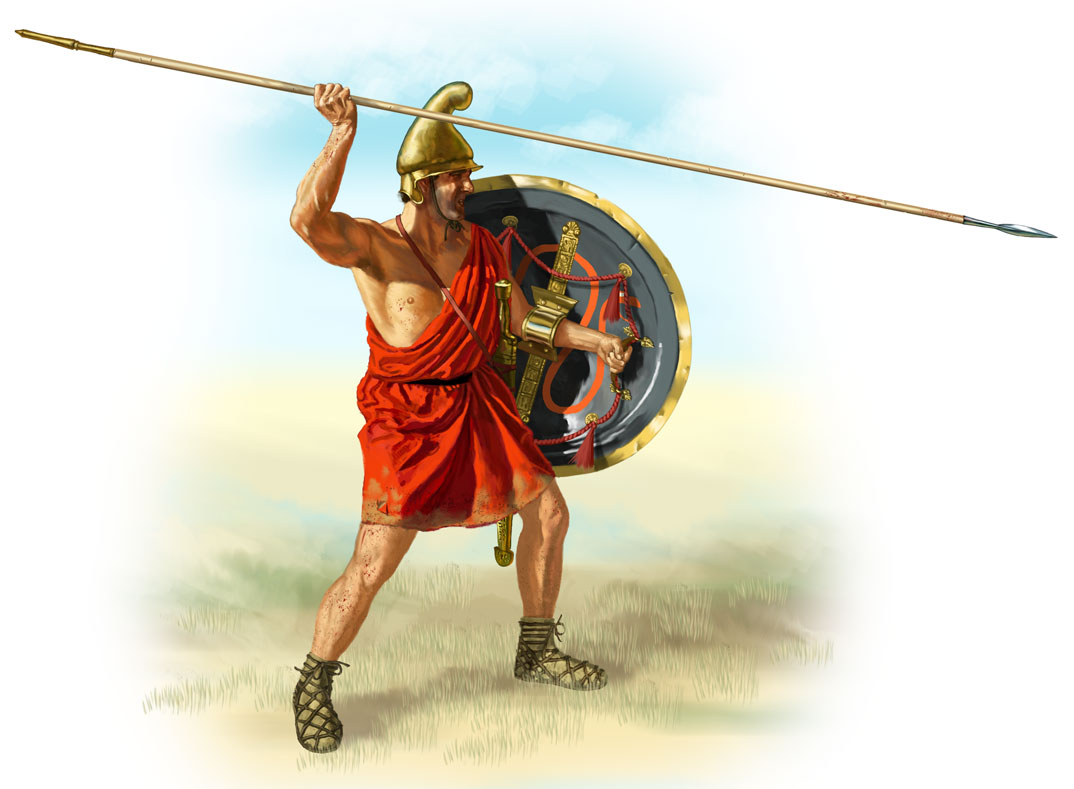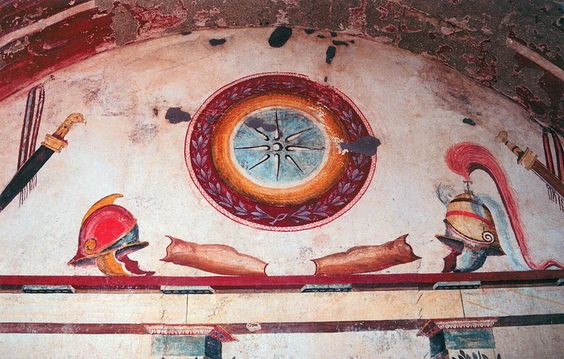|
Military Decree Of Amphipolis
The Military Decree of Amphipolis (c. 200 BC) is a Macedonian Greek Greek may refer to: Greece Anything of, from, or related to Greece, a country in Southern Europe: *Greeks, an ethnic group. *Greek language, a branch of the Indo-European language family. **Proto-Greek language, the assumed last common ancestor ... inscription of two marble blocks, that originally contain at least three columns of text. It preserves a list of regulations governing the behaviour and discipline of the Macedonian army in camp. Other military terms mentioned are: ''ephodos'' (inspection patrol), ''ekkoition'' ("out-of-bed", LSJ: night-watch), ''stegnopoiia'' (building the barracks), ''skenopoiia'' (tent-making), ''phragmos'' (fencing in), '' diastasis'', ''phylax'' (guard), hypaspists, parembole, '' stratopedon'' (camp), ''speirarch'' (commander of a speira), tetrarch, and the '' strategoi''. See also * Antigonid Macedonian army References *Amphipolis — c. 200 BCMeletemata 22, Epig. ... [...More Info...] [...Related Items...] OR: [Wikipedia] [Google] [Baidu] |
Amphipolis
Amphipolis ( ell, Αμφίπολη, translit=Amfipoli; grc, Ἀμφίπολις, translit=Amphipolis) is a municipality in the Serres regional unit, Macedonia, Greece. The seat of the municipality is Rodolivos. It was an important ancient Greek polis (city), and later a Roman city, whose large remains can still be seen. Amphipolis was originally a colony of ancient Athenians and was the site of the battle between the Spartans and Athenians in 422 BC. It was later the place where Alexander the Great prepared for campaigns leading to his invasion of Asia in 335 BC. Alexander's three finest admirals, Nearchus, Androsthenes and Laomedon, resided in Amphipolis. After Alexander's death, his wife Roxana and their son Alexander IV were imprisoned and murdered in 311 BC. Excavations in and around the city have revealed important buildings, ancient walls and tombs. The finds are displayed at the archaeological museum of Amphipolis. At the nearby vast Kasta burial mound, an ancien ... [...More Info...] [...Related Items...] OR: [Wikipedia] [Google] [Baidu] |
Hyperetes
Hyperetes ( grc-gre, ὑπηρέτης; pl. ''hyperetai'') was an Ancient Greek title. It is derived from ἐρέσσω (''eresso''), and therefore originally signifies a rower, but in later times the word was, with the exception of the soldiers or marines, applied to the whole body of persons who performed any service in a vessel. In a still wider sense it was applied to any person who acted as the assistant of another, and performed manual labour for him, whether in sacred or profane things, whence the word is sometimes used as synonymous with slave. Hence also the name was sometimes given to those men by whom the hoplites were accompanied when they took the field, and who carried the luggage, the provisions, and the shield of the hoplites. The more common name for this servant of the hoplites was skeuophoros. At Athens it seems to have been applied to a whole class of officers. Aristotle (''Politics'' vi. 5) divides all public offices into three classes, ''archai'' or magistracie ... [...More Info...] [...Related Items...] OR: [Wikipedia] [Google] [Baidu] |
Antigonid Macedonia
Macedonia (; grc-gre, Μακεδονία), also called Macedon (), was an ancient kingdom on the periphery of Archaic and Classical Greece, and later the dominant state of Hellenistic Greece. The kingdom was founded and initially ruled by the royal Argead dynasty, which was followed by the Antipatrid and Antigonid dynasties. Home to the ancient Macedonians, the earliest kingdom was centered on the northeastern part of the Greek peninsula,. and bordered by Epirus to the west, Paeonia to the north, Thrace to the east and Thessaly to the south. Before the 4th century BC, Macedonia was a small kingdom outside of the area dominated by the great city-states of Athens, Sparta and Thebes, and briefly subordinate to Achaemenid Persia. During the reign of the Argead king PhilipII (359–336 BC), Macedonia subdued mainland Greece and the Thracian Odrysian kingdom through conquest and diplomacy. With a reformed army containing phalanxes wielding the '' sarissa'' pike, PhilipII ... [...More Info...] [...Related Items...] OR: [Wikipedia] [Google] [Baidu] |
Ancient Macedonian Army
The army of the Kingdom of Macedon was among the greatest military forces of the ancient world. It was created and made formidable by King Philip II of Macedon; previously the army of Macedon had been of little account in the politics of the Greek world, and Macedonia had been regarded as a second-rate power. The latest innovations in weapons and tactics were adopted and refined by Philip II, and he created a uniquely flexible and effective army. By introducing military service as a full-time occupation, Philip was able to drill his men regularly, ensuring unity and cohesion in his ranks. In a remarkably short time, this led to the creation of one of the finest military machines of the ancient world. Tactical improvements included the latest developments in the deployment of the traditional Greek phalanx made by men such as Epaminondas of Thebes and Iphicrates of Athens. Philip II improved on these military innovators by using both Epaminondas' deeper phalanx and Iphicrates' co ... [...More Info...] [...Related Items...] OR: [Wikipedia] [Google] [Baidu] |
Greek Inscriptions
The Greek-language inscriptions and epigraphy are a major source for understanding of the society, language and history of ancient Greece and other Greek-speaking or Greek-controlled areas. Greek inscriptions may occur on stone slabs, pottery ostraca, ornaments, and range from simple names to full texts. Inscriptiones Graecae The ''Inscriptiones Graecae'' (IG), Latin for ''Greek inscriptions'', project is an academic project originally begun by the Prussian Academy of Science, and today continued by its successor organisation, the ''Berlin-Brandenburgische Akademie der Wissenschaften''. Its aim is to collect and publish all known ancient inscriptions from the ancient world. As such it will eventually make all other previous collections redundant. It is divided by regions. I/II/III - Attica IV - Aegina, Pityonesus, Cecryphalia, the Argolid V - Laconia, Messenia and Arcadia VII - Megarid, Oropus, and Boeotia IX - Aetolia, Acarnania, West Locris and Thessaly X - Epirus, Ma ... [...More Info...] [...Related Items...] OR: [Wikipedia] [Google] [Baidu] |
Antigonid Macedonian Army
The Antigonid Macedonian army was the army that evolved from the ancient Greek kingdom of Macedonia in the period when it was ruled by the Antigonid dynasty from 276 BC to 168 BC. It was seen as one of the principal Hellenistic fighting forces until its ultimate defeat at Roman hands at the Battle of Pydna in 168 BC. However, there was a brief resurgence in 150-148 during the revolt of Andriscus, a supposed heir to Perseus. Starting as just a mere handful of mercenary troops under Antigonus Gonatas in the 270s BC, the Antigonid army eventually became the dominant force in Hellenistic Greece, fighting campaigns against Epirus, the Achaean League, Sparta, Athens, Rhodes and Pergamon, not to mention the numerous Thrace, Thracian and Celtic tribes that threatened Macedon from the north. The Antigonid army, as with the Ancient Macedonian army, army of Philip II of Macedon, Philip II and Alexander the Great that came before it, was based principally around the Macedonian phalanx, ... [...More Info...] [...Related Items...] OR: [Wikipedia] [Google] [Baidu] |
Strategos
''Strategos'', plural ''strategoi'', Latinized ''strategus'', ( el, στρατηγός, pl. στρατηγοί; Doric Greek: στραταγός, ''stratagos''; meaning "army leader") is used in Greek to mean military general. In the Hellenistic world and the Eastern Roman Empire the term was also used to describe a military governor. In the modern Hellenic Army, it is the highest officer rank. Etymology ''Strategos'' is a compound of two Greek words: ''stratos'' and ''agos''. ''Stratos'' (στρατός) means "army", literally "that which is spread out", coming from the proto-Indo-European root *stere- "to spread". ''Agos'' (ἀγός) means "leader", from ''agein'' (ἄγειν) "to lead", from the proto-Ιndo-Εuropean root *ag- "to drive, draw out or forth, move”. Classical Greece Athens In its most famous attestation, in Classical Athens, the office of ''strategos'' existed already in the 6th century BC, but it was only with the reforms of Cleisthenes in 501 BC ... [...More Info...] [...Related Items...] OR: [Wikipedia] [Google] [Baidu] |
Tetrarch (Macedonian Rank)
Military ranks are a system of hierarchy, hierarchical relationships, within armed forces, police, intelligence agencies or other institutions organized along military lines. The military rank system defines dominance, authority, and responsibility in a military hierarchy. It incorporates the principles of exercising power and authority into the military command hierarchy, chain of command—the succession of commanders superior to subordinates through which command is exercised. The military chain of command constructs an important component for organized collective action. Uniforms denote the bearer's rank by particular insignia affixed to the uniforms on a number of countries. Ranking systems have been known for most of military history to be advantageous for military operations, in particular with regards to logistics, command, and coordination. As time went on and military operations became larger and more complex, military ranks increased and the ranking systems themselves ... [...More Info...] [...Related Items...] OR: [Wikipedia] [Google] [Baidu] |
Towns Of Ancient Greece
The archetypical settlement in ancient Greece was the self-governing city state called the ''polis'' ( grc-gre, πόλις), but other types of settlement occurred. Kome A ''kome'' ( grc-gre, κώμη) was typically a village that was also a political unit. The translation is inexact, but according to Thucydides, Sparta, though it was a ''polis,'' resembled four unwalled villages. Similarly, a ''kome'' could be a neighbourhood within a larger ''polis'' or its own rural settlement. Thucydides mused that the ''polis'' had developed from the ''kome.'' Katoikia A ''katoikia'' ( grc-gre, κατοικία) was similar to a ''polis'', typically a military colony, with some municipal institutions, but not those of a full ''polis.'' The word derives from the grc, κατοικέω for "''to inhabit''" (a settlement) and is somewhat similar to the Latin ''civitas''. In the Classical era, there were few ''katoikiai''; however, with the rise of large centralized empires followin ... [...More Info...] [...Related Items...] OR: [Wikipedia] [Google] [Baidu] |
Hypaspists
A hypaspist ( el, Ὑπασπιστής "shield bearer" or "shield covered") is a squire, man at arms, or "shield carrier". In Homer, Deiphobos advances "" () or under cover of his shield. By the time of Herodotus (426 BC), the word had come to mean a high status soldier as is strongly suggested by Herodotus in one of the earliest known uses: A similar usage occurs in Euripides's play '' Rhesus'' and another in his '' Phoenissae''. Xenophon was deserted by his horse in a particularly sticky situation. A hypaspist would differ from a skeuophoros in most cases because the "shield bearer" is a free warrior and the "baggage carrier" was probably usually a slave. The word may have had Homeric and heroic connotations that led Philip II of Macedon to use it for an elite military unit. This unit, known as the Hypaspistai, or hypaspists, was probably armed in the hoplite manner, with a large concave shield (Aspis) and a spear (Dory), in addition to spolas or linothorax body-arm ... [...More Info...] [...Related Items...] OR: [Wikipedia] [Google] [Baidu] |



